Material Collection
Earth
Buildings made with earth-based materials—raw soil mixed with water, fibers, and additives—have been prevalent for thousands of years. Earth materials can be fabricated with and without fire. Unfired, earth materials can be returned to the soil when no longer in use. Products that utilize non-permanent binders are circular building materials.
Permanent binders, such as cement, have become prevalent because they are fast-drying and fabrication methods have become efficient. Cement and concrete have fundamentally changed how we build. Cement now contributes at least 8% of global CO2 emissions because of the energy-intensive, high-heat processes required to convert minerals into cement binders.
Unfired earthen materials require no heat and little fuel to make them usable and therefore present a significantly lower greenhouse gas emitting solution to building construction. Unfired Earth materials have lower embodied carbon, they passively regulate temperatures and provide better indoor air quality to living spaces. Clay materials can be repaired, reused, and recycled.
Best practices source locally. It reduces transportation emissions, expenses, and keeps soils native to regional ecosystems. Using soil displaced from onsite excavation is a good choice. Some building material producers source soil from local quarries to their production facilities to standardize mixes and achieve higher quantities of materials. Construction methods vary widely and include Rammed Earth, Adobe, and Compressed Blocks.
This collection focuses on unfired earth-based products that are currently available in large quantities and avoid permanent binders as much as possible.
Below are a few examples of Earth products that meet our rigorous evaluation. For further help on your own search for working with Earth, scroll down to "Spec Guidance”.
Earth
12 products
About Our Collections
The goal of our collections is to help promote transparency in the material ingredients of building products by fostering knowledge and awareness of products and materials for which life-cycle information is available, and that have environmentally, economically, and socially preferable life-cycle impacts.
Keep an eye out for the following symbols:
A Healthier Affordable Building Product
Products with the designation of "Healthier & Affordable" were specified and installed in at least one of our Case Studies of healthier affordable housing.
Available at the Donghia healthier Materials Library
The Donghia healthier Materials Library library is open to Parsons student and faculty. Learn more about access and opening hours here.
Low Embodied Carbon
“Embodied Carbon” is the total amount of carbon emitted during the process of making a material. *HML refers to a manufacturer's EPD to determine whether a product's A1-A3 carbon emissions falls within HML's threshold for Low Embodied Carbon.
New Product
This product has been added to the collection within the past six months.
Product in Development
Products with this designation identify they are currently scaling or only available in markets outside of the building industry. they could be experimental or in use in capsule collections.
Available in the EU
Products with this designation are currently available only in the European Union and identified as being an exemplary healthy option in the respective product group.
Ingredient Disclosures
There are several ways of evaluating a material’s health that we include with product information. Disclosures are reports by manufacturers about product ingredients, impacts, or other attributes.
Key Disclosures include:
Health Product Declaration (HPD)
A voluntary technical specification for reporting information on product contents and associated health information, intended to be the health-analogue to Environmental Product Declarations (EPDs).
Declare Label
Declare is a transparency platform and product database that answers three questions:
1. Where does a product come from?
2. What is it made of?
3. Where does it go at the end of its life?
Environmental Product Declaration (EPD)
A standardized format for communicating the environmental effects associated with a product’s raw materials extraction, energy use, chemical makeup, waste generation, and emissions to air, soil, and water.
Safety Data Sheet (SDS)
A reporting format that provides basic information about a material’s chemical ingredients, the potential safety hazards to installers, and recommended practices for installation.
USDA Certified Biobased Product Label
Managed by the U.S. Department of Agriculture (USDA), the goal of the BioPreferred Program is to increase the purchase and use of biobased products.
Other
| Manufacturer | Product | Ingredient Disclosures |
|---|---|---|
| American Clay | Loma™ Plasters |
Loma™ PlastersAvailable At the Donghia Materials LibraryLoma Clay Plasters from American Clay are a mix of natural earth and pigment. The plasters are made in New Mexico with 72% recycled content by weight. Clay is naturally a softer material that requires care. It can be successfully installed without the use of a binder to avoid acrylated styrene polymer. CategoryPlaster, ClayManufacturerAmerican Clay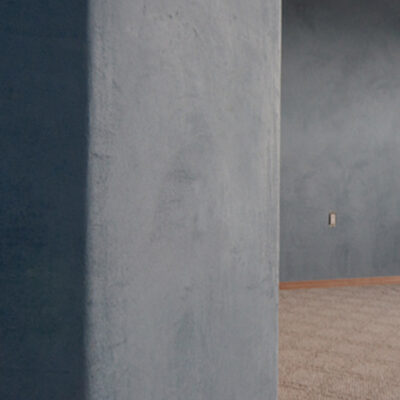
Material composition*Reclaimed Marble, Sand, Clay, <2% Quartz, Pigment, Water *as reported by the manufacturer CERTIFICATIONS & DISCLOSURES
Health Product Declaration (HPD)
Declare Label
Environmental Product Declaration (EPD)
Safety Data Sheet (SDS)
USDA Certified Biobased Product Label
Other
Last UpdatedJanuary 13, 2026 |
| Arizona Adobe | AZ Adobe Blocks |
AZ Adobe BlocksArizona Adobe creates two types of bricks from local soils: puddled (a combination of earth and water mixed to a near mud consistency, sun-dried over 2-4 weeks) and pressed adobe bricks (a mix of soil and water condensed per hydraulic presses and machine automation, bricks emerge nearly dry). They come in standard and veneer sizes. All projects are provided a mortar with a matching composition. Custom and site-made bricks are available upon request. CategoryMasonry, AdobeManufacturerArizona Adobe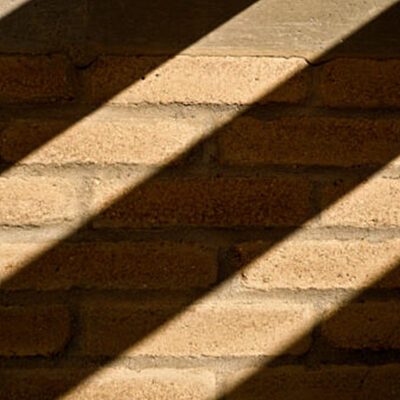
Material composition*Clay, Water, 8% Portland Cement *as reported by the manufacturer CERTIFICATIONS & DISCLOSURES
Health Product Declaration (HPD)
Declare Label
Environmental Product Declaration (EPD)
Safety Data Sheet (SDS)
USDA Certified Biobased Product Label
Other
Last UpdatedJanuary 13, 2026 |
| New Mexico Adobe | New Mexico Adobe Blocks |
New Mexico Adobe BlocksNew Mexico Adobe makes unstabilized blocks from local mud and straw. The blocks are made by pouring the mixture through a wooden mold and sun-dried. They come in a standard and veneer size. CategoryMasonry, AdobeManufacturerNew Mexico Adobe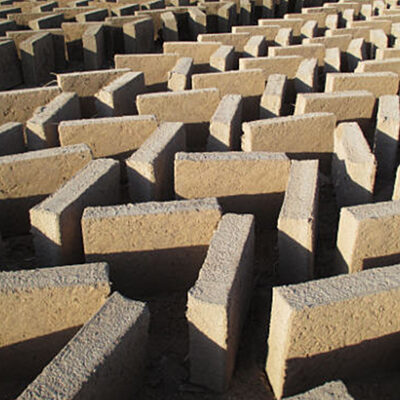
Material composition*Clay, Water, Straw *as reported by the manufacturer CERTIFICATIONS & DISCLOSURES
Health Product Declaration (HPD)
Declare Label
Environmental Product Declaration (EPD)
Safety Data Sheet (SDS)
USDA Certified Biobased Product Label
Other
Last UpdatedJanuary 13, 2026 |
| Colorado Earth | ECOBLOX |
ECOBLOXAvailable At the Donghia Materials LibraryColorado Earth makes unfired compressed earth blocks (CEB) and adobe bricks from clay and lime. The materials are sourced in Colorado from local quarries, by-products of the excavation operations, and are low-carbon masonry units. Earthen mortar and plasters can be made with the same compositions as CEB and adobe bricks for use with these products. This product has no Portland Cement content. CategoryMasonry, Compressed Earth BlockManufacturerColorado Earth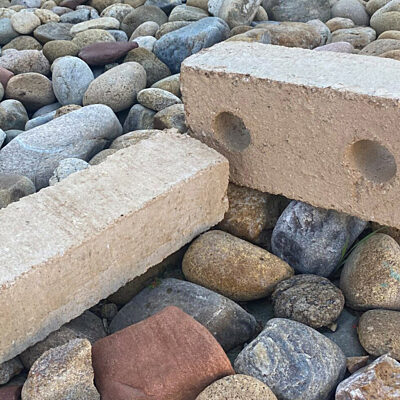
Material composition*Sand, Clay, hydrated Lime *as reported by the manufacturer CERTIFICATIONS & DISCLOSURES
Health Product Declaration (HPD)
Declare Label
Environmental Product Declaration (EPD)
Safety Data Sheet (SDS)
USDA Certified Biobased Product Label
Other
Last UpdatedJanuary 13, 2026 |
| Clayworks | Clay Plasters |
Clay PlastersAvailable At the Donghia Materials LibraryLow-Embodied Carbon MaterialClayworks clay plasters are blends of unfired clays mixed with natural minerals and pigments. They provide a 100% natural alternative for gypsum plaster and paint wall finishing. Clayworks clay plasters are non-toxic, avoid synthetic additives and emit zero VOCs or formaldehyde. They are free of heavy metals and can be composted. The clay plasters help regulate indoor relative humidity and temperature, absorb toxics and odors, and are easily repaired. They are made in the UK and supplied in a dried form, ready to mix with water and apply with conventional plastering tools and skills. The BM-1 hazard on the HPD relates to respiratory protection. The clay plasters also contribute to WELL and LEED certifications. Per Claywork's product-specific EPDs, this product meets HML's criteria for low embodied carbon. CategoryPlaster, ClayManufacturerClayworks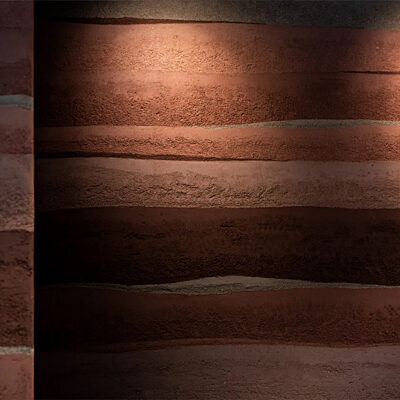
Material composition*Blended Sands, Kaolin, Other Proprietary Ingredients *as reported by the manufacturer CERTIFICATIONS & DISCLOSURES
Health Product Declaration (HPD)
Declare Label
Environmental Product Declaration (EPD)
Safety Data Sheet (SDS)
USDA Certified Biobased Product Label
Other
Additional DocumentsLast UpdatedJanuary 13, 2026 |
| Hart Keramik |
Lemix® Clay Panel
|
Lemix® Clay PanelAvailable At the Donghia Materials LibraryAvailable in the EULEMIX® clay building panels are a healthier alternative for any type of drywall construction. Being made of 100% natural materials, clay panels are naturally mold resistant, eliminating the need for harmful biocides. Due to being made from clay, they can regulate humidity and heat while absorbing VOCs, pollutants, and odors. They can be compostable and recyclable. CategoryDrywall, ClayManufacturerHart Keramik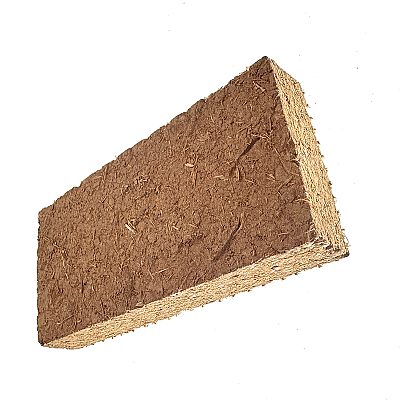
Material composition*clay, potters clay, wood fiber, starch, hessian mesh (rear side only) *as reported by the manufacturer AVAILABLE SIZING49.2" x 24.6" x 1/2" or 3/4" thick CERTIFICATIONS & DISCLOSURES
Health Product Declaration (HPD)
Declare Label
Environmental Product Declaration (EPD)
Safety Data Sheet (SDS)
USDA Certified Biobased Product Label
Other
Natureplus
Additional DocumentsLast UpdatedDecember 16, 2025 |
| Criaterra | Criaterra Wall Tiles |
Criaterra Wall TilesCRIATERRA creates 100% natural, compressed earth blocks through an innovative manufacturing process with no kiln required. Their cement-free "Bio-Geo Stone" building products are currently made as wall tiles. It is recommended to install with disassembly considerations as the material is recyclable and able to return to the earth after use. CategoryTile, ClayManufacturerCriaterra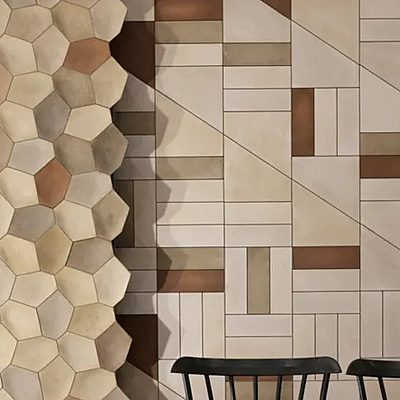
Material composition*CRIATERRA is composed of hay plant fibers, silt, sand, and clay. *as reported by the manufacturer COLORSAvailable in a range of colors CERTIFICATIONS & DISCLOSURES
Health Product Declaration (HPD)
Declare Label
Environmental Product Declaration (EPD)
Safety Data Sheet (SDS)
USDA Certified Biobased Product Label
Other
Last UpdatedDecember 16, 2025 |
| BC Materials |
Molded Block
|
Molded BlockAvailable in the EUBC Materials create molded blocks from brick, clay and loam. They source 75% secondary resources from locally available construction sites and materials are 100% reusable and recyclable. They are sourced within a 250km radius. The drying time is 28 days. The Léém blocks have been testedby the Eco-institut Köln to ensure they are free of pollution such as: PCB,PFC, asbestos, lead, heavy metals, hydrocarbons, mineral oils, VOCs, flame retardants, phthalates and isocyanates and do not emit any harmful substances. It qualifies for WELL and BREEAM points. The evolving industrial production creates leveled surfaces that allow for 2-3 mm joints with respective mortar. Note: CEB can be selected for loading-bearing walls. These contain 3.85% cement as a stabilizer. CategoryMasonry, Compressed Earth BlockManufacturerBC Materials
Material composition*Clay, Loam, Brick; 3.85% cement for load bearing product *as reported by the manufacturer CERTIFICATIONS & DISCLOSURES
Health Product Declaration (HPD)
Declare Label
Environmental Product Declaration (EPD)
Safety Data Sheet (SDS)
USDA Certified Biobased Product Label
Other
Last UpdatedJanuary 13, 2026 |
| BC Materials |
Clay Plaster
|
Clay PlasterLow-Embodied Carbon MaterialAvailable in the EUBC Materials create a natural breathable plaster of clay, loam, sand and fibers. Different types of sand and clay will determine the color and texture of the plaster. The ingredients are sourced from urban sites in a 250km radius. Léém plaster has been tested by the Eco-institut Köln to ensure it is free of pollution such as: PCB,PFC, asbestos, lead, heavy metals, hydrocarbons, mineral oils, VOCs, flame retardants, phthalates and isocyanates and do not emit any harmful substances. It qualifies for WELL and BREEAM points. Note: Per EPD, this product meets HML's criteria for low embodied carbon based on 10mm thickness. CategoryPlaster, ClayManufacturerBC Materials
Material composition*Clay, Loam, Sand, Natural Fibers *as reported by the manufacturer CERTIFICATIONS & DISCLOSURES
Health Product Declaration (HPD)
Declare Label
Environmental Product Declaration (EPD)
Safety Data Sheet (SDS)
USDA Certified Biobased Product Label
Other
Last UpdatedJanuary 13, 2026 |
| AURO | High-grade Clay paint No. 331 |
High-grade Clay paint No. 331The Auro No. 331 High-grade Clay Paint is a water-based clay and mineral paint for interior walls. It has a moisture regulating effect and is highly breathable. It meets the EU EcoLabel, Indoor Air Comfort Gold, Nordic Swan, WELL, BREEAM, and LEED standards. It is free from preservatives. The paint comes in white only, natural pigments can be added. CategoryPaint / Earth, ClayManufacturerAURO
Material composition*Water, clay, mineral fillers, 11% titanium dioxide, Replebin® binding agent, cellulose, surfactants made of rapeseed and castor oil, ammonia *as reported by the manufacturer CERTIFICATIONS & DISCLOSURES
Health Product Declaration (HPD)
Declare Label
Environmental Product Declaration (EPD)
Safety Data Sheet (SDS)
USDA Certified Biobased Product Label
Other
Eurofins Gold Indoor Air Comfort
Last UpdatedJanuary 13, 2026 |
| ClayTec |
Clay thin-bed mortar
|
Clay thin-bed mortarAvailable in the EUThis thin-bed mortar from ClayTec is completely soluble, ensuring separation and the infinite recycling of building materials for a circular system. It meets the requirements for non-load-bearing interior walls and is suitable for clay blocks, bonding bricks, sand-lime bricks, and aerated concrete. It is an ECOInstitut Tested Product for low pollutants and emissions. CategoryMortar, ClayManufacturerClayTec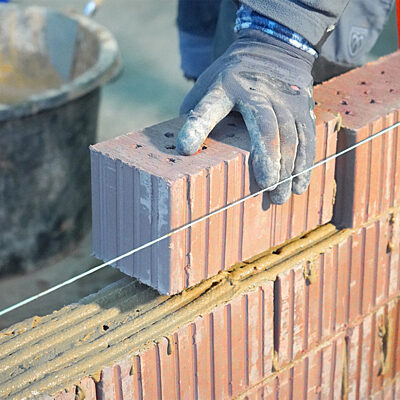
Material composition*Sand up to 1.0 mm, construction clay, talcum, perlite, plant fibers, and cellulose *as reported by the manufacturer CERTIFICATIONS & DISCLOSURES
Health Product Declaration (HPD)
Declare Label
Environmental Product Declaration (EPD)
Safety Data Sheet (SDS)
USDA Certified Biobased Product Label
Other
Eco Institute
Last UpdatedJanuary 13, 2026 |
| New Mexico Earthworks | Compressed Earth Blocks |
Compressed Earth BlocksNew Mexico Earthworks is a scaled manufacturer of Compressed Earth Blocks. They have 3 standardized blocks for interior, exterior and structural use. Their materials are locally sourced from quarries in Texas and New Mexico. They can also make rammed earth, Adobe and mortar with a similar composition. CategoryMasonry, Compressed Earth BlockManufacturerNew Mexico Earthworks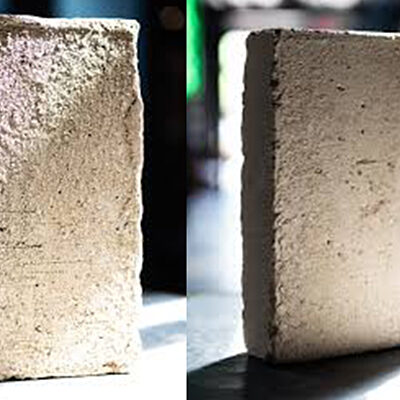
Material composition*Clay, Pumice, Lime, Water *as reported by the manufacturer AVAILABLE SIZING10"x14", 4"x12", 7"-8"x14" CERTIFICATIONS & DISCLOSURES
Health Product Declaration (HPD)
Declare Label
Environmental Product Declaration (EPD)
Safety Data Sheet (SDS)
USDA Certified Biobased Product Label
Other
Last UpdatedJanuary 13, 2026 |
The products in this collection have been evaluated for their contents and performance. To be considered, the product must have a primary ingredient (by volume) that is derived or harvested from raw earth avoiding asphalt, concrete, and additives harmful to humans and planet. Procurement should prioritize products made with local materials.
All products are evaluated for embodied carbon {kg of CO₂ eq /square meter) if (LCA) and (EPD) documentation is available. Those under 5 kg of CO₂ equivalent per square meter earn the HML Standard for Low Embodied Carbon (LEC) and are clearly marked.
Spec Guidance
Ask manufacturers for transparency and LCA information as much as possible. Traditional earth materials and fabrication methods may not yet have certifications and disclosures. Note: Manufacturers of newer products often keep ingredients proprietary.
Avoid petrochemical additives like asphalt and high contents of Portland cement. Prefer lime binders when possible. Note: this might result in slower dry times.
Opt for locally available soils from as close to the construction site as possible. Test clay compositions to determine necessary percentages of additives and binders.
Consider geographical context for technique and regulation. For example, Adobe techniques are best suited for dry climates.
Opt for local fibrous agricultural byproducts to use in combination with clays.
Spec mortars from the same composition as earth blocks. Typically, mortars can be sourced from the same supplier.
Consider labor costs and time. i.e., Rammed Earth requires higher skilled masonry techniques than Adobe and Compressed Earth Block construction.
Consult and collaborate with local natural builders for expertise and best practices. Knowledgeable local builders are often the best resources.
Calculate energy and material savings of an earth-based project. Factor in necessary maintenance intervals.
Updated September 22, 2023
More Collections
Join Our Academic Network
Get Access to our carefully researched and curated academic resources, including model syllabi and webinars. An email from an academic institution or a .edu email address is required. If your academic institution does not use .edu email addresses but you would like to join the network, please contact healthymaterialslab@newschool.edu.
Already have an account? Log in